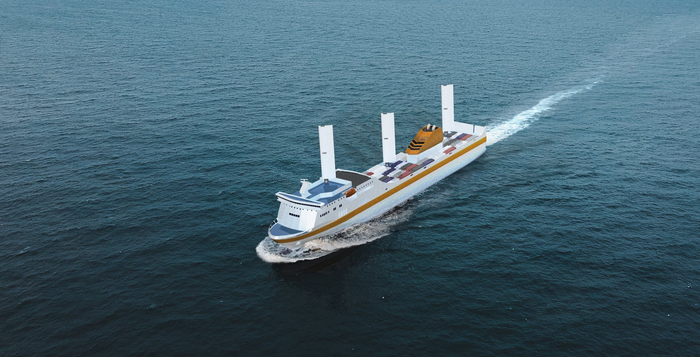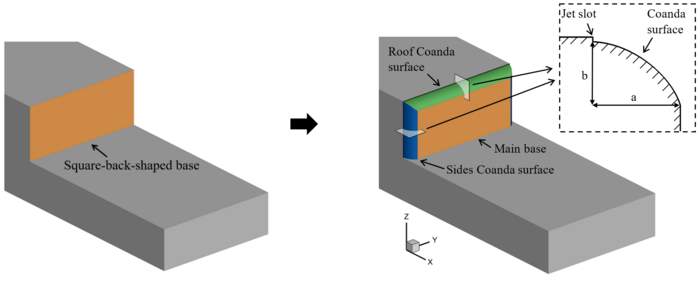By Charles Carter, 06/04/23

Researchers at Chalmers University of Technology, Sweden, have developed a new method to reduce the aerodynamic drag of ships, which could significantly reduce their carbon footprint.
As much as 99% of global shipping currently relies on fossil fuels, making it a major contributor to carbon emissions.
The International Maritime Organisation has called for a 50% reduction in shipping emissions by 2050, which makes the need for energy-efficient propulsion technology solutions critical.
The new method devised by Chalmers researchers could reduce a ship’s aerodynamic drag by 7.5%.
“Reducing aerodynamic drag has seldom been examined; our study is one of the first of its kind,” says Kewei Xu, a postdoc researcher in marine technology at Chalmers.
The new method is based on the steady flow Coanda effect, which describes the tendency of a fluid to flow along an outwardly curved surface, rather than launching away from it.

The researchers induced the Coanda effect by creating a design with convex edges on the ship’s superstructure and allowing highly compressed air to flow through “jet slots,” which allows air pressure on the ship’s hull to balance out.
This reduces aerodynamic drag and makes the ship more energy-efficient.
The new method developed by the Chalmers researchers is particularly relevant to future wind-powered shipping, as it requires a more efficient aerodynamic design.
Previously, the aerodynamic effect was not deemed important compared to a ship’s total resistance in water.

“Our long-term aim is to make wind power the sole energy source for cargo ships and the like,” says Kewei Xu.
The method can be used on existing as well as newly-designed ships and is described in the researchers’ study Large eddy simulation of ship airflow control with steady Coanda effect published in Physics of Fluids.
The researchers’ hope the shipping industry will welcome this solution as part of its necessary transition to lower emissions.
“Our study also indicates great potential for reducing drag even more through further optimization,” says Kewei Xu.
Reducing the carbon footprint of shipping is critical for achieving international climate targets.
The method developed by Chalmers researchers could play a significant role in making shipping more energy-efficient and reducing its carbon footprint.
Links
https://aip.scitation.org/doi/10.1063/5.0127560



